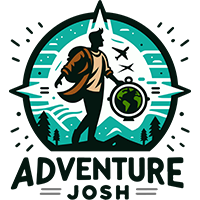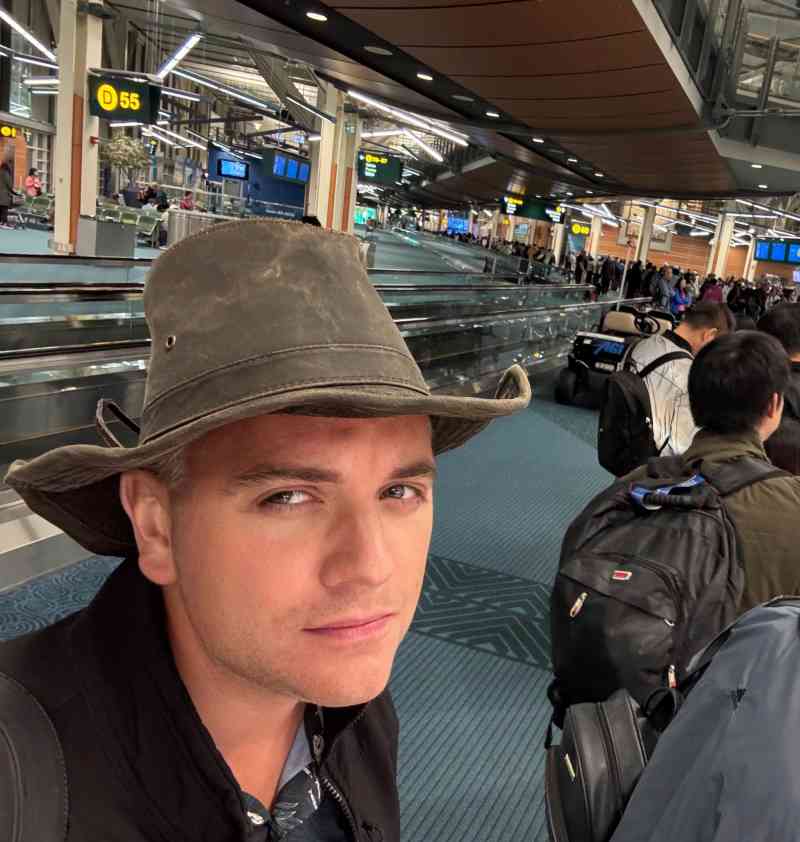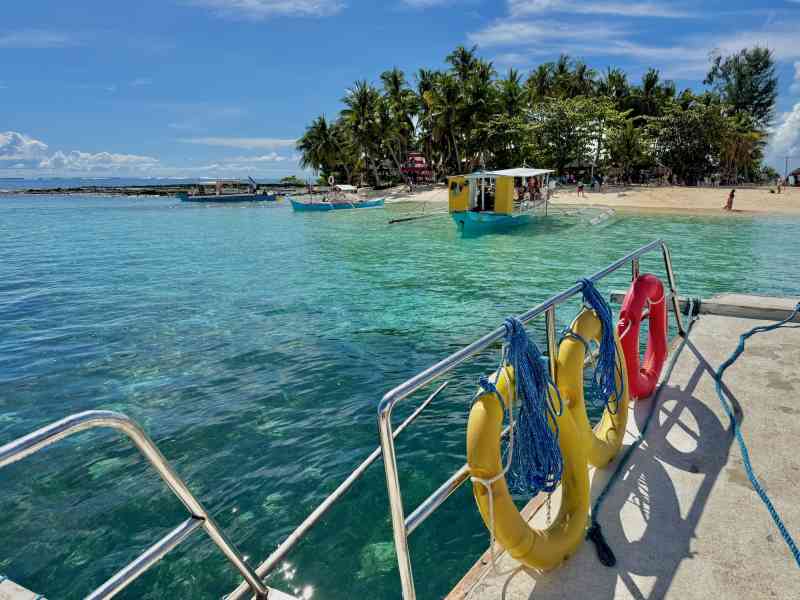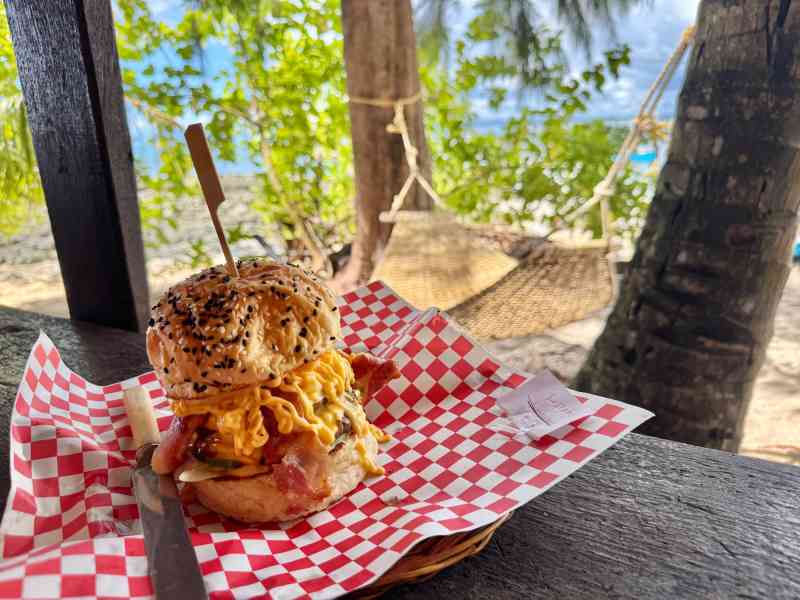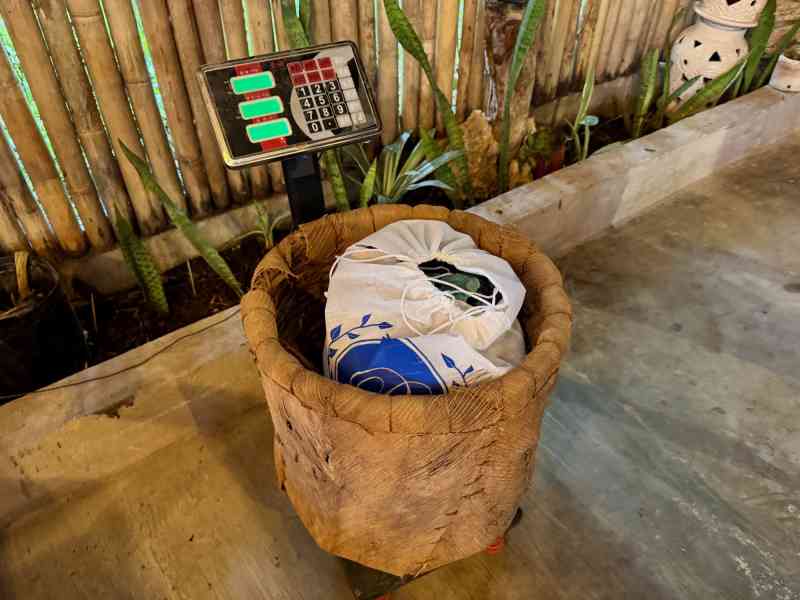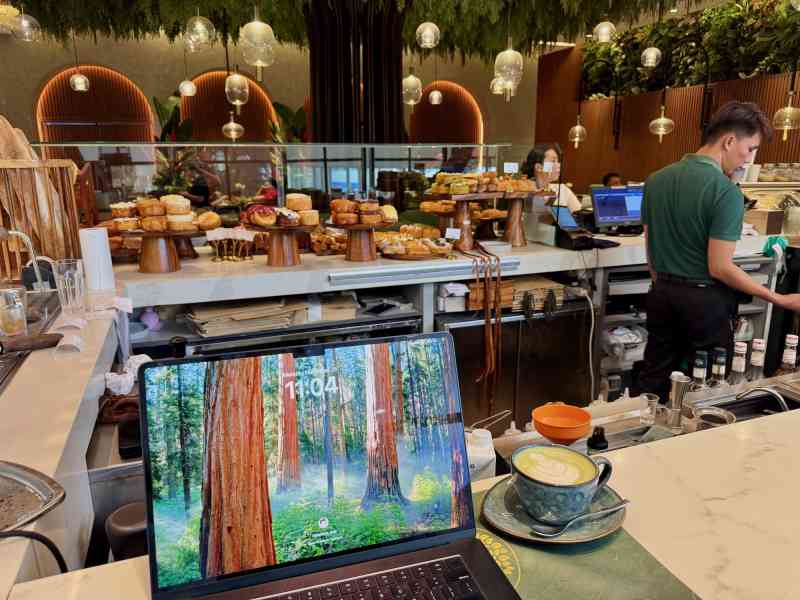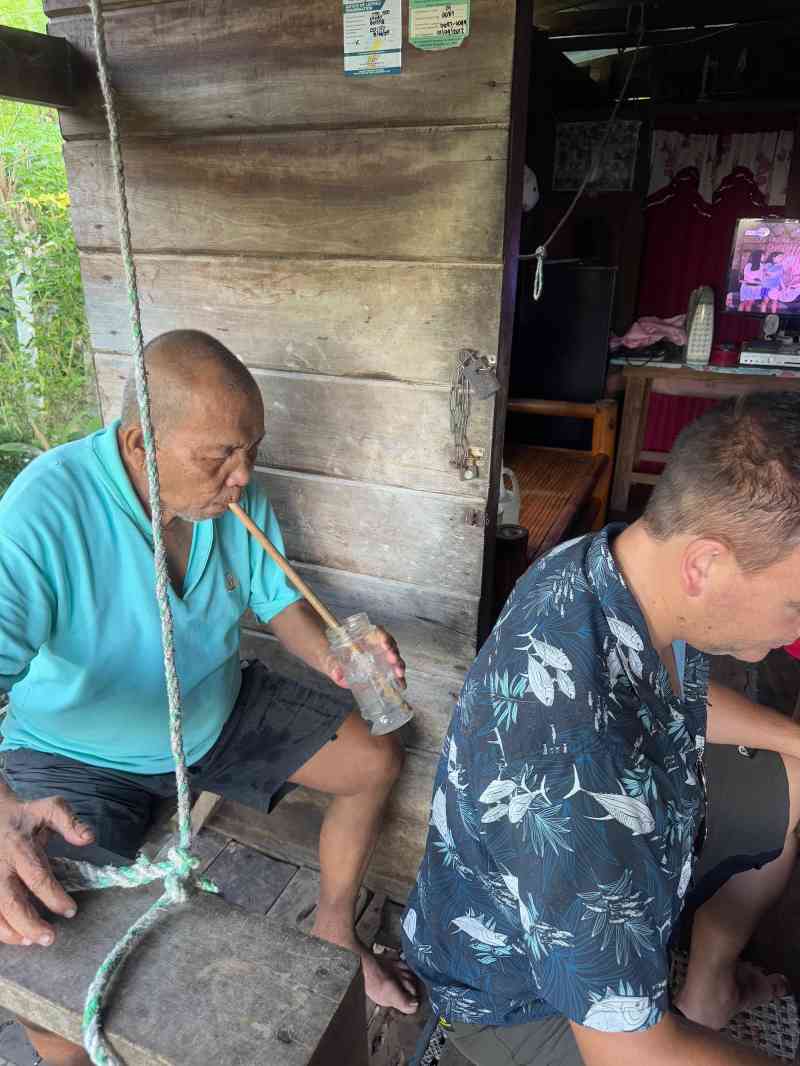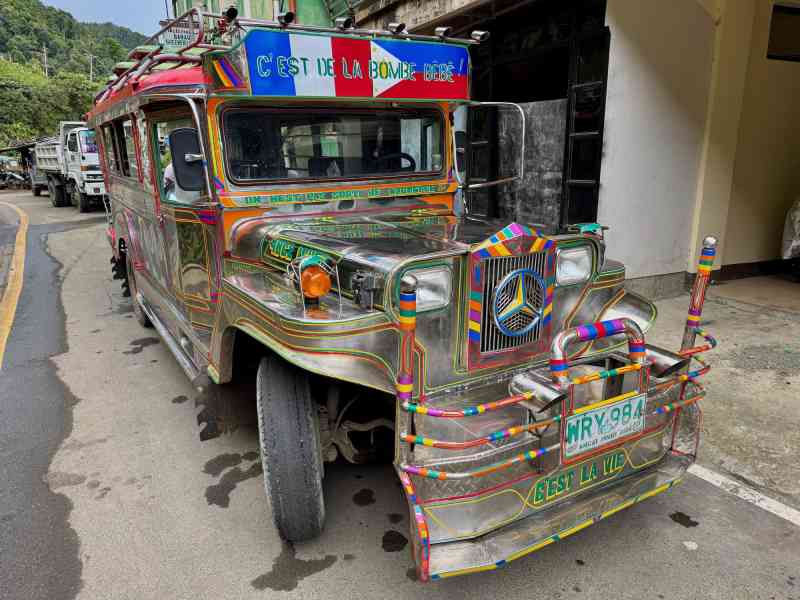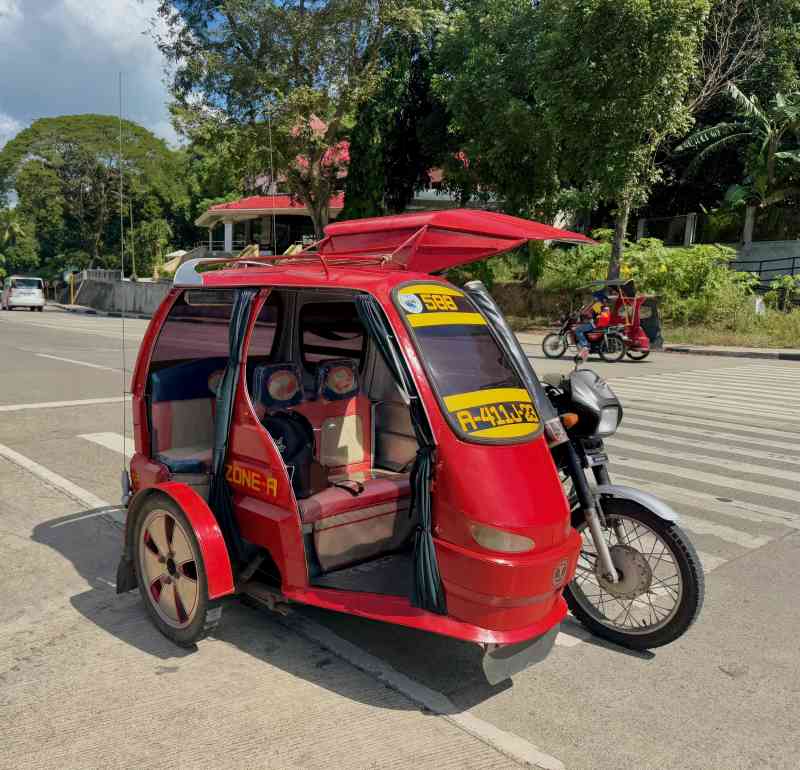Ultimate 2025 Travel Guide
Over the years, I’ve tackled everything from archeological digs in Israel to surveying wildlife in South Africa. I’m also that guy who once sprinted in socks (go gout) through an airport to catch a connection — so yes, I’ve made almost every travel mistake in the book. The goal here is to make sure you don’t.
This guide is perfect if you're up for mastering international travel like a pro. The end of 2024 marks 12 years of serious international travel for me! Maybe you’re a wet-behind-the-ears 20-something on your first long-term trip like I was back then, or you’re just seeking new experiences beyond the usual “Top 10” tourist traps. There’s no magic solution, but with some planning, resourcefulness, and a healthy sense of humor, the world isn't nearly as daunting.
- Pre-Trip Planning & Research
- Budgeting & Money Matters
- Packing & Luggage
- Travel Tech & Gadgets
- Health, Safety & Insurance
- Cultural Sensitivity & Etiquette
- Solo Travel Tips
- Maximizing Experiences
- Sustainable & Responsible Travel
- Navigating Airports & Transportation
- Avoiding Common Mistakes & Scams
- Content Creation Tips
- Managing Stress & Mindset
- After You Touch Down Back Home
Pre-Trip Planning & Research
The difference between a chaotic scramble and a smooth journey usually comes down to planning. I'm so OCD it's scary. I've had to learn to let go more. On the opposite side, I’ve met travelers who assume their “go-with-the-flow” mantra will solve everything. Spoiler: missing a flight because you “didn’t check the bus schedules” can be a pricey lesson.
- Lock Down Those Visas and Documents: Countries vary wildly in entry requirements. Some require e-visas you can snag online; others need months of bureaucratic back-and-forth. Don’t put it off. I was so used to Visa on Arrival, I failed to check if India needed a Visa for Canadians. So did the agent at the check in desk. Upon landing, I hid in a bathroom and panicked and had to order an expensive express online visa and wait hours for it to arrive before finally emerging to customs.
- Passport Validity: Passports should be in good condition, be valid at least six months prior to your return date, and have two blank pages left for stamps. Last I recall, Apple was working on a digital passport for governments which will hopefully roll out soon. Some countries will even require that travelers carry their passport or Photo ID with them at all times, instead of allowing it to be stored in the safe at the hotel.
- Choose Travel Windows Wisely: Scanning Google Flights or Skyscanner for alternate dates can slash your airfare. My biggest money-saver is playing with midweek departures or off-season travel.
- Housing Matters: Maybe you love meeting fellow backpackers in hostels, or perhaps the thought of bunk beds raises your blood pressure. There’s no right or wrong. Just know your comfort zone and budget, and book a place that checks both.
- Basic Language Phrases: Learn how to say “Hello,” “Thank you,” and “How much?” in the local tongue. It’s not just polite — it can save you from misunderstandings that escalate into comedic disasters.
- Research Local Customs: For instance, you might be expected to remove your shoes indoors in places like Japan. Understanding these norms tells locals you’re not just another clueless tourist with zero respect. I once put my feet up at a cafe on a chair in Panama, and had the hostess swat them off to the floor. Social behavior there is of utmost importance — even in casual settings.
Budgeting & Money Matters
Ever discovered that your bank balance is lower than your phone battery? It’s awful. Making a solid budget ahead of time keeps you from rationing instant noodles when you’re supposed to be out sampling local cuisine.
- Calculate a Realistic Daily Allowance: It’s easy to overlook local transport costs, museum entry fees, or that occasional fancy dinner. Don’t shortchange yourself; build in a small “whoops” fund for surprises.
- Score Points with Travel Credit Cards: Many travelers swear by them. Some cards offer no foreign transaction fees or let you rack up miles for future flights. Just set reminders to pay off the balance in full, or interest charges will ruin the party.
- Multiple Payment Methods: Always stash backup cash and maybe a second credit card. I’ve had a card unexpectedly disabled at a random hotel at check in, which could’ve been a nightmare without backup.
- Watch for Hidden Fees: ATM charges abroad can get steep, plus you have dynamic currency conversion, resort fees, or local city taxes. Check your statements, or at least glance at them every couple of days. Prefer the "Without Conversion" option at ATMs and terminals and let your home bank give you their best rate (almost guaranteed to be better).
- Track Expenses with Friends: Use apps like Splitwise to track expenses as you go. It's way more practical than saving receipts and tallying up later with friends. It has an awesome tool for settling up at the end and even supports multiple currencies.
If your style is ultra-budget, look into house-sitting, work exchange programs (like Workaway or WWOOF), or volunteering abroad. These not only trim your expenses but also provide immersive cultural experiences.
Packing & Luggage
I’ve encountered travelers schlepping luggage bigger than me. The aftermath? Stress, possible chiropractor visits, and sweaty attempts to shove that bloated suitcase into overhead bins.
I once arrived in a country and had to give an emergency call to my friend who's a physiotherapist back in Canada. My body had seized up and I could barely bend for three days; courtesy of all the awkward positions I was in for prolonged periods hauling my gear.
- Choose Versatile Clothes: Neutral shades, quick-dry fabrics, and a few comfy layers can handle most climates. Bringing an extra pair of jeans “just in case” often ends up as dead weight. Consider avoiding any bulky clothes in general, like those jeans, as packing a lightweight alternative may be a lot more practical.
- Use Packing Cubes: They keep things neat, which makes living out of a bag less chaotic. Plus, it’s simpler to locate that one T-shirt you desperately need without dumping the entire contents of your suitcase.
- Essential Gadgets & Tools: Universal adapter, portable battery, travel lock. EasyRoam on carriers with TELUS or similar are great for short trips, but get expensive in the long run. I’ve found a local SIM card can be just as good, especially if you don’t mind a bit of Googling to figure out data plans. Unfortunately, it does mean some extra jumping through hoops and sometimes activating a foreign plan can take hours with ID verification.
- First-Aid Kit: Some band-aids, antiseptic wipes, pain relievers, anti-diarrheal meds (yep), and personal prescriptions. Better to have them and not need them than the other way around.
- Documentation Backup: Print a few copies of your passport, driver’s license, plus save to the cloud digital versions. The “I lost my passport” meltdown is much easier to handle with spares.
- Laundry Logistics: If you’re on the road for weeks, scout out laundromats or hostels with laundry facilities so you’re not handwashing socks in the sink every night like a novice. In the Philippines, laundry is calculated by kilogram and will usually only cost $2-$5 per load for wash, dry and fold services. Stark contrast to hotel laundry prices in Baden-Baden Germany which gouged me at 300 euros per load! I'm still ripe about that one.
Travel Tech & Gadgets
It’s easy to drag along half the electronics store, but let’s be honest: you won’t produce a National Geo-level documentary. Keep your gear strategic so you’re not fumbling with cables 24/7.
- Unlocked Phone & Local SIM: Saves heaps in roaming fees. You can also tether other devices to your phone if you snag a generous data plan. Most phones these days are already unlocked by default.
- Offline Maps and Translation Apps: Download offline Google Maps, especially for places with spotty connections. Tools like Google Translate can ease cross-cultural confusion when pointing and smiling fails. It even translates live with your camera now!
- Portable Charger: Especially helpful if you’re snapping photos, recording videos, or using navigation all day. For a day abroad I'll suck back an entire Anker 20,000 mAh power bank because of all the video footage I take! It's by far the best brand.
- Cloud & Physical Backup: Travel bloggers often mention the heartbreak of a fried memory card. Why are you even using a digital camera anymore? Current cell phone cameras are amazing! Ditch the extra equipment unless necessary. Then use cloud storage (Google Drive, Dropbox) or a pocket-sized external hard drive to preserve your trip photos and videos nightly. Often cloud won't sync over low battery or on cellular data so you may need to force it through manually.
Health, Safety & Insurance
Nothing says “vacation from hell” like a surprise medical bill or an unexpected accident. Don’t risk a massive financial hit — or your well-being.
- Proper Travel Insurance: Make sure it covers medical expenses, trip cancellations, and baggage issues. World Nomads is popular with many bloggers, but compare a few providers to see which suits your coverage needs.
- Watch What You Eat & Drink: Street food is often perfectly safe if it’s hot and prepared in front of you, but keep your eyes peeled for hygiene standards. Also, take it easy on the tap water in countries where it isn’t recommended. Even if it's "service water" in Philippines. There's such varying degrees of water cleanliness at restaurants. Notably salads and other veggies. Stick to fruits that are peelable.
- Stay Hydrated & Rested: Indulging in all-night parties might be fun for a while, but try not to burn out. Traveling hungover is a surefire way to ruin sightseeing plans.
- Local Emergency Numbers: 911 isn’t universal. A quick Google search reveals emergency lines for your destination. Store them in your phone.
- Vaccinations & Health Prep: Sometimes vaccinations are not only a smart idea, but also legally required. COVID aside, Yellow Fever vaccines are mandated in some areas, take a week to become effective, and often need to be booked weeks in advance.
- Medications: Never take pills out of their original containers. Keep labels and containers intact. Customs may contest if they can't identify what medications you're bringing into the country as regulations vary.
And if you do find yourself under the weather, locate a reputable clinic sooner rather than later. A small bruise or nagging cough can escalate if you ignore it in favor of a perfect Instagram shot.
Cultural Sensitivity & Etiquette
We’re guests in someone else’s territory, so why not show a little respect? Travelers who make an effort usually find locals more open, helpful, and welcoming.
- Do Some Homework: Certain gestures or topics might be taboo. In some places, asking personal questions is normal; in others, it’s invasive. The more you know, the fewer awkward social flubs.
- Dress the Part: If you’re visiting temples in Southeast Asia, cover your shoulders and knees. If traveling through conservative areas, check if religious sites have stricter requirements.
- Ask Before Filming or Photographing Locals: People aren't tourist attractions. A quick nod or question can diffuse tension and build genuine connections.
- Attempt the Language: Even if you butcher it, people appreciate the effort. In the Philippines, even just adding "Po" can show respect.
Solo Travel Tips
There’s a special kind of magic (and occasional terror) in traveling alone. It’s an ultimate test of self-reliance, but it also allows you to change plans on a whim.
- Stay Connected: Let someone you trust know where you’re staying each night. Share your itinerary or at least give them a heads-up about your general route. I always share my live location on the cloud with my family.
- Socialize, but Trust Your Gut: Hostels, tours, and travel meetups can spark lifelong friendships. Just keep your wits about you and don’t broadcast personal details to shady characters. Have a backup identity and story to share if you're uncomfortable with them instead of creating conflict by refusing to answer.
- Look Confident, Even if You’re Lost: Nothing screams “Tourist me!” like fumbling around panicked. Step into a café or store to gather yourself and check a map, or quietly do so on your phone.
- Enjoy Me-Time: Dine alone, explore museums at your pace, read in a park. Part of solo travel is learning to love your own company.
Maximizing Experiences
Some trips revolve around ticking off bucket-list items (like my personal quest to see the New 7 Wonders). Others are all about wandering side streets, chasing lesser-known hikes, or sampling local nightlife. No path is wrong.
- Book Key Attractions Early: If you have your heart set on the Louvre, the Colosseum, or Machu Picchu, secure tickets. Lines get insane, and some require advanced reservations. I failed on this to see the Last Supper painting and found a workaround to buying a ticket weeks in advance was to buy online from a super expensive tour. Not awesome, but there's sometimes a solution if you look hard enough.
- Steal! Open Google Maps, sign in, and then check out GetYourGuide, Viator, Klook and any other tours sites. Add all of the itinerary points from each tour that interest you as "Want to Go" spots on Google. You've now got your visual adventure map with the least amount of effort and won't accidentally miss something stellar that the major tours hit nearby.
- Leave Room for Spontaneity: One of my constant recurring tips is to avoid over-scheduling. You might stumble upon a local festival or hidden beach, which can be a highlight you never saw coming. Not to mention error days. Sometimes flights are delayed, weather is bad and you'll rebook a tour, or you'll get sick. At each destination leave a wiggle room day or two.
- Try Local Specialties: If you’re in Italy, eat real pizza in Naples. In Vietnam, sample authentic pho on the street. Culinary experiences often become top memories, even for people who claim they “don’t travel for food.”
- Tap into Local Knowledge: Talk to bartenders, hostel staff, or Uber drivers. They usually have the scoop on the best viewpoints or weird off-grid adventures you won’t find in a guidebook.
- Local Holidays & Festivals: Aside from not wanting to miss anything epic like Holi in India or the numerous seemingly monthly festivals in the Philippines, they can dramatically alter business hours posted online.
Sustainable & Responsible Travel
Seeing incredible places only to watch them degrade from over-tourism or neglect is heartbreaking. The very least we can do is minimize our footprint.
- Say No to Single-Use Plastics: Bring a reusable water bottle, filter, or purification tablets. Many airports and hostels have refill stations these days.
- Support Local Businesses: Book activities with local guides, buy from small markets, and dine at family-run restaurants. Your money makes a tangible difference to the community. Often online prices can be substantially higher than in person. In the Philippines a lot of experiences aren't even bookable online and you're expected to just show up.
- Respect Wildlife: Avoid exploitative animal attractions or tours that encourage unnatural interactions. Look for ethical sanctuaries or reserves if you want to connect with wildlife responsibly.
- Be Mindful of Overtourism: If a destination has been heavily publicized to the point of damaging its environment or culture, consider visiting in the off-season or exploring nearby less-crowded gems.
Navigating Airports & Transportation
You’ve breezed (or crawled) through airport security, and now you’re faced with a labyrinth of gates. Travel enough and you learn to see airports as mini-cities — with their own set of quirks and potential mishaps.
- Arrive Early, But Not at 4 AM for a 2 PM Flight: There’s a balance. My mom still needs to learn this. 😂 Typically, two or three hours is enough for international. Factor in rush hour if you’re heading to a busy airport. I've never spent more than 1 hour at security and bag drop. Flights rarely board more than 30 minutes prior to departure.
- Leverage Layovers: Some flights allow multi-day stopovers. They’re a sweet deal if you want to explore an extra destination without separate airfare.
- Local Transit: Trains, buses, and subways can be far cheaper than taxis or rideshare services, and they’re often a more authentic slice of daily life in that country. Just memorize the route and operating hours to avoid being stranded. In many counties they'll even have local ride hailing apps outside of Uber.
- Overnight Travel: If you’re comfortable, night trains or buses save on accommodation. But weigh the trade-offs: a rough sleeper berth can leave you too dead to enjoy the next day. Earplugs and an eye mask are critical.
- Long Flights: Compression socks, hydration, and mid-flight walks can ward off the dreaded economy-class syndrome. And for the sake of your sanity, expect to drain your battery, there be no seat-back TV, and no WiFi. Sitting bored will feel like eternity.
- Adapting to Jet Lag: Gradually adjust your sleep schedule beforehand, or use naps strategically upon arrival. The general rule is that it takes one day to adjust to one hour of time zone difference.
Avoiding Common Mistakes & Scams
Scammers see tourists as walking ATMs. Protect yourself with a dose of caution.
- Taxi & Tuk-Tuk Tricks: “Meter broken” is a classic line. Negotiate a fare upfront or insist on the meter if it’s there. If it doesn’t feel right, walk away.
- Fake Souvenirs: The “authentic” hand-carved item might be mass-produced. Doesn’t mean you can’t buy it, but don’t pay an artisan price for a factory product.
- Free Bracelets or Flowers: In some tourist-heavy areas, a friendly vendor might tie a bracelet on you and then demand payment. Firmly say no if you’re not interested.
- Overly Helpful Strangers: Many are genuine, but some might lead you astray for a fee. If someone is pushy about “guiding” you, politely but firmly decline unless you feel 100% comfortable.
Content Creation Tips
Whether you’re an aspiring YouTuber or a casual Instagrammer, capturing your travels is part of the fun. You want to showcase that epic waterfall or bustling market without burying yourself in editing apps.
- Plan Some Shots: If you want cohesive content, build a loose storyline: arrival, local cuisine, hidden gems, highlights. Otherwise you end up with random disjointed clips.
- Keep Gear Manageable: A mid-range camera or even a phone with decent stabilization is enough. Lugging heavy lenses can obliterate your enthusiasm.
- Back Up Nightly: I’m saying this a second time because it’s crucial. Memory cards and electronics have a terrible sense of humor about failing exactly when you’ve captured something priceless. Once the cloud even randomly deleted all of my photo content when syncing to a new device!
- Talk to Locals: If you’re vlogging, share authentic stories or short interviews, not just scenic montages. Personal narratives beat a million postcard shots that every other traveller has.
Managing Stress & Mindset
Traveling is an incredible teacher, but often it teaches via flight cancellations, culture shock, and lost baggage. The key is staying adaptable and remembering it’s part of the "adventure."
- Keep Breathing: Miss a train? Lose your wallet? Yeah, it’s frustrating, but meltdown mode won’t solve it. Step one: calm down. Step two: problem-solve.
- Manage Expectations: Instagram filters can paint a pretty surreal but artificial picture of travel. The reality might be rainy days, sweaty hikes, or meager coffee in your hostel’s “breakfast.”
- Schedule Downtime: A day off in a comfy hotel room or a breezy café can be the mental reset you need. Constantly being on the go wears you out. Even me! My runtime is 3 weeks on the go before I need a few days of downtime and catch up. But, I'm a machine.
- Find Your Fun: If you hate museums like me, skip them. If you love spontaneous conversations with strangers, say hi to someone new each day. Travel is personal. So is oxytocin.
After You Touch Down Back Home
So you’ve seen the wonders, braved that suspicious street food, and experienced enough chaotic bus rides to last a lifetime. Coming home is equal parts relieving and jarring.
- Process Your Photos & Videos: Label them while memories are fresh. And for God's sake, don't wait to edit them until you get home! Do that part on the fly at the end of each day. Otherwise, six months from now you’ll wonder which cathedral that “random interior shot” belonged to. And the task of going through 5,000 photos to edit and delete will seem daunting.
- Share, But Stay Genuine: If you’re blogging or vlogging, keep the authenticity. People crave real stories — yes, the marvelous victories, but also the challenges.
- Address Your Souvenir Hangover: Sorting through random trinkets can be a chore. If something no longer sparks joy, perhaps it’s best to give it away rather than letting it gather dust.
- Start Dreaming of the Next Destination: Some folks feel a twinge of melancholy after a big trip. Channel that into research or planning for the next. But don’t forget to savor where you are now.
Ensure your journey is authentically you and unique. My own pursuits gravitated towards uncovering hidden corners off TripAdvisor’s top ten, completing epic bucket lists, and revisiting places I once thought were just fantasies from a movie screen. Yours might involve chasing the best eats, partying till dawn, or scouring the planet for the perfect beach. Embrace what drives you, stay informed, and keep an open mind for those moments that life tosses your way that you didn't expect. The best stories often begin when plans fall apart.
